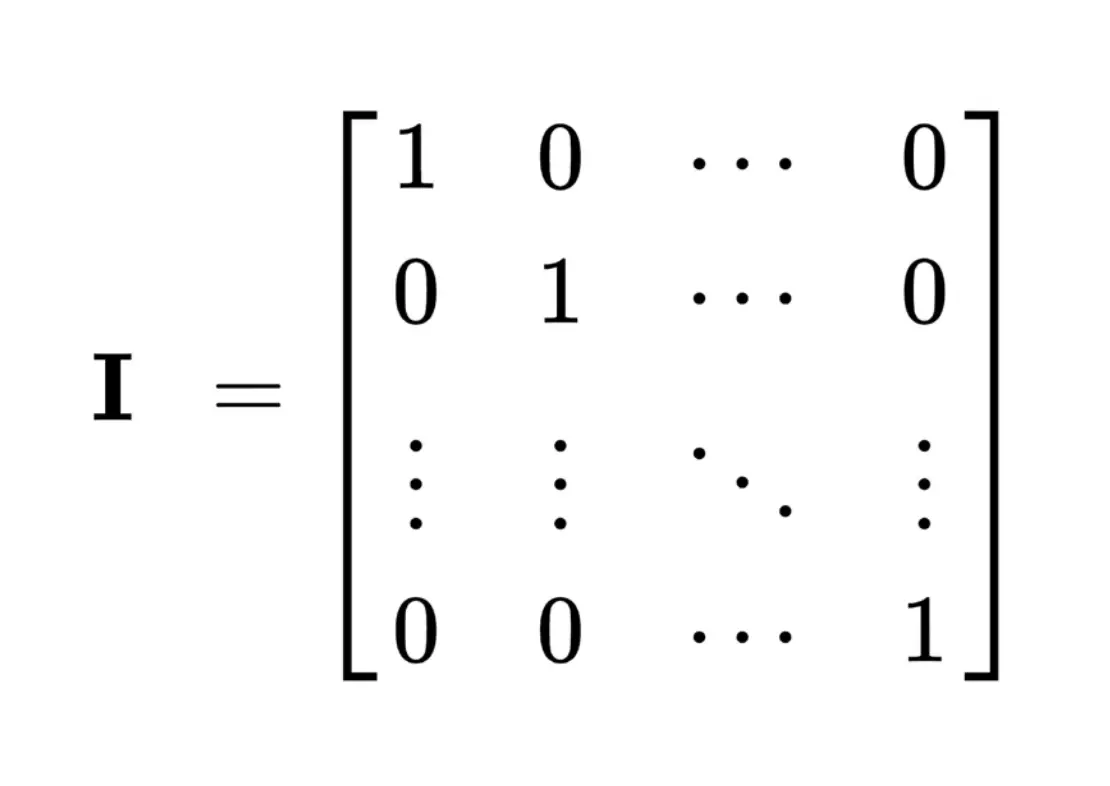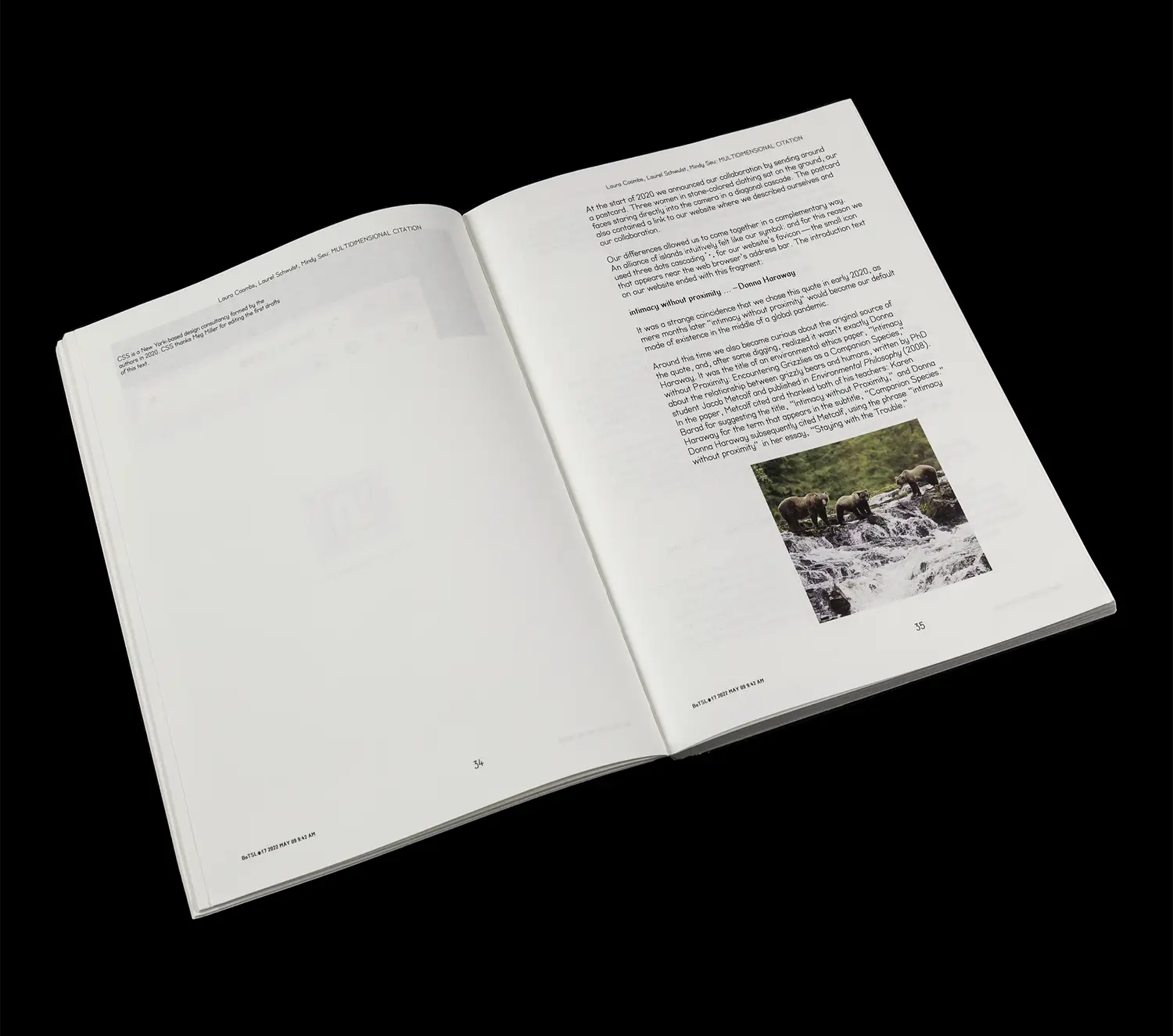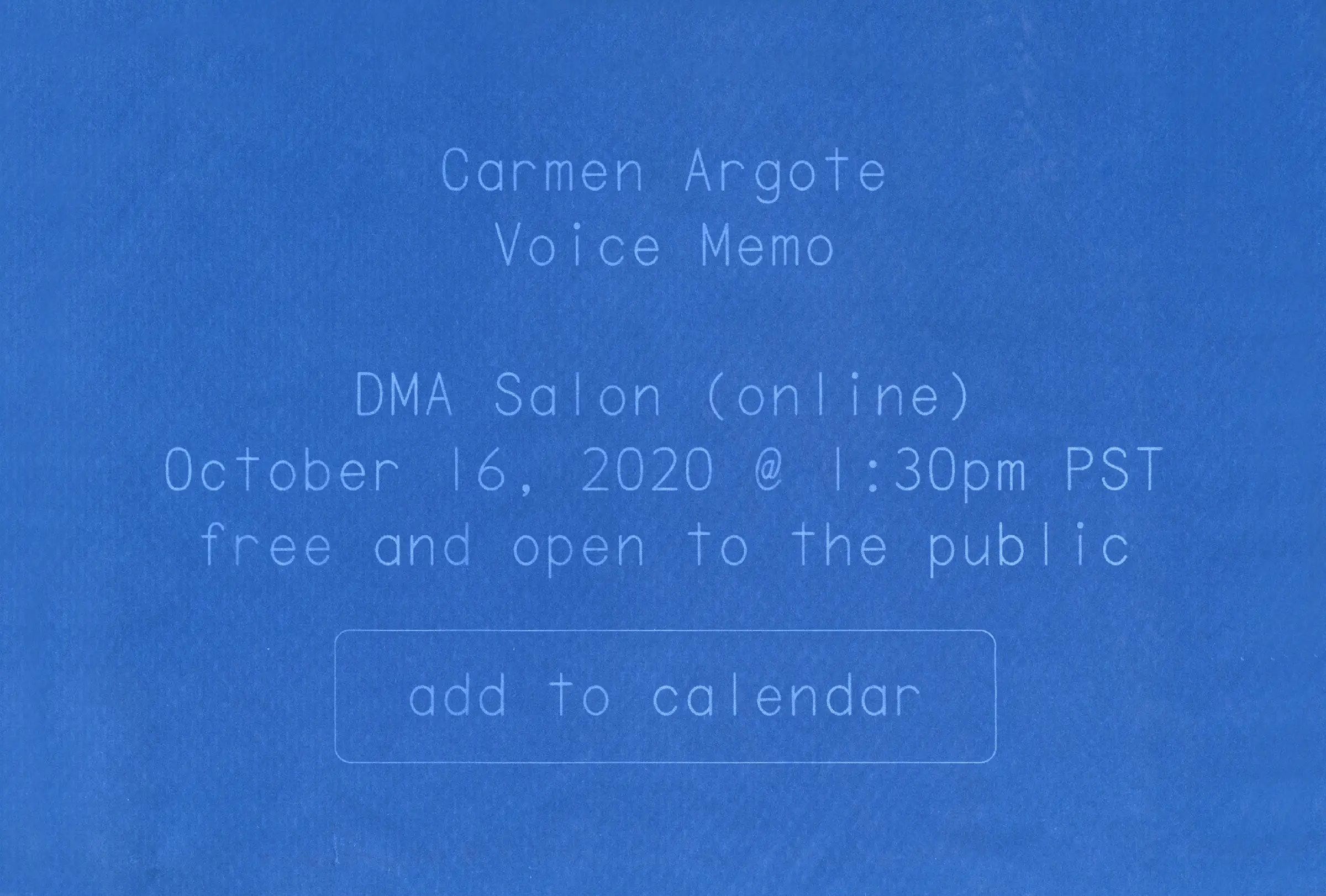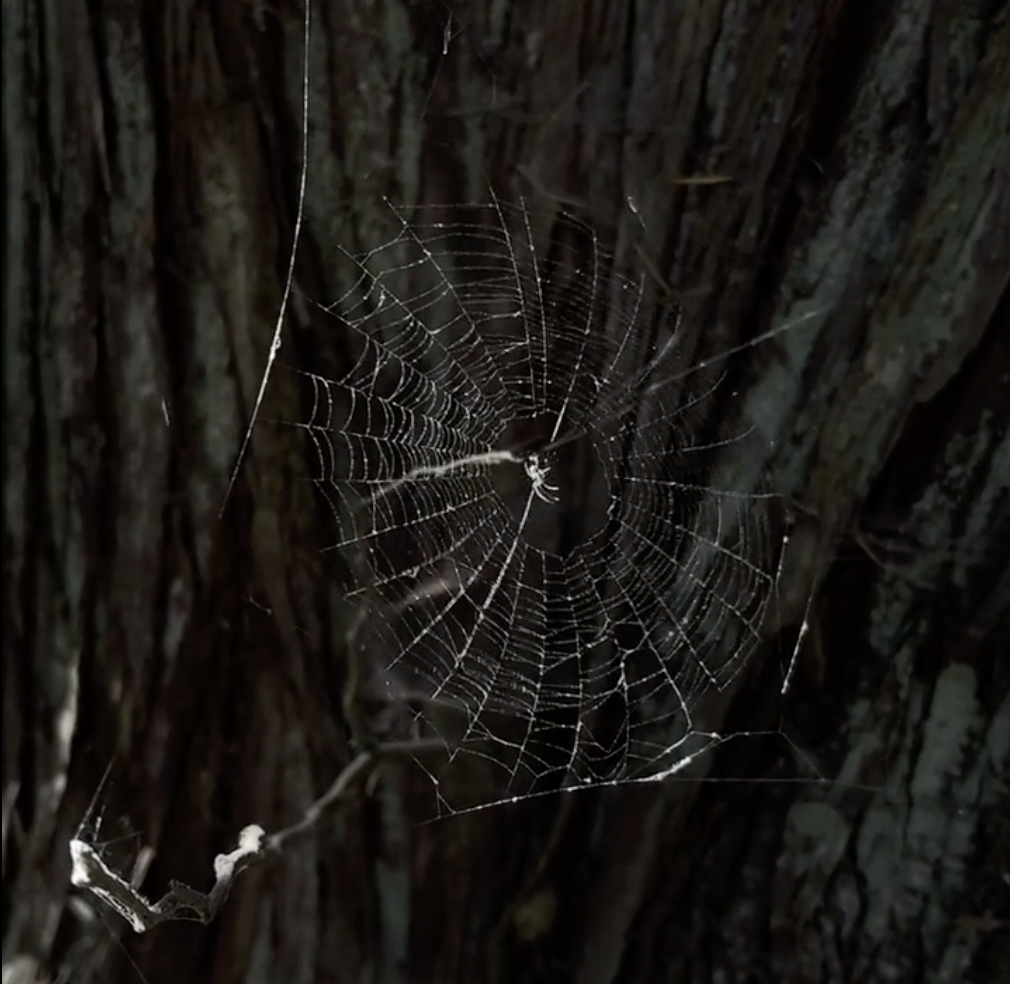In the beginning of 2020, we announced our collaboration by sending around a postcard: Three women in stone-colored clothing sitting on the ground, our faces staring directly into the camera in a diagonal cascade.

The postcard also contained a link to our website where we described ourselves and our collaboration further. As individuals, we were unique, and our differences allowed us to come together in a complementary way. Because of this, an alliance of islands intuitively felt like our symbol: and it was for this reason we used three dots cascading ⋱ for our website’s favicon — the small icon that appears near the web browser’s address bar.
Our website text ended with this:
“intimacy without proximity ... ” — Donna Haraway
It was a strange coincidence that we chose this quote in early 2020, as mere months later, “intimacy without proximity” became a priority within our new world in the middle of a global pandemic.
Around this time we also became curious about the original source of the quote, and, after some digging, realized it wasn’t exactly Donna Haraway. It was the title of an environmental ethics paper, “Intimacy without Proximity: Encountering Grizzlies as a Companion Species,” about the relationship between grizzly bears and humans, written by PhD student Jacob Metcalf and published in Environmental Philosophy (2008). In the paper, Metcalf cited and thanked both of his teachers: Karen Barad for suggesting the title, “Intimacy without Proximity,” and Donna Haraway for the phrase that appears in the subtitle, “Companion Species.” Donna Haraway subsequently cited Metcalf, using the phrase “intimacy without proximity” in her essay, “Staying with the Trouble.”

At first we felt slightly embarrassed that we had mistaken the source. Although no one seemed to notice, it felt important to amend the citation to reflect the complex relationship of authors linked to the single phrase. Over the summer we quietly updated our CSS website with all three names, trailing off into the distance ...
“intimacy without proximity ... ” . Donna Haraway
. Jacob Metcalf
. Karen Barad
which later evolved into:
“intimacy without proximity ... ” — Karen Barad ⋱ Jacob Metcalf ⋱ Donna Haraway
With this gesture, our symbol became what we’ve taken to calling a “multidimensional citation,” a way of tracing not only the source of a quote but the learning trail that supports and surrounds it. While we realize ⋱ is not multidimensional, operating linearly on the printed page, the phrase “multidimensional” captured the mysterious quality we felt when imagining a more expansive citational practice. A citation should not be singular, but instead explicitly connected to the lineage of research that came before it. We hoped our mark would be understood as a gesture towards this truth.
Looking at the three names again, we asked ourselves, “Who is missing?” The citation could also acknowledge the people who brought this material to our attention, who might otherwise be left out in a traditional footnote. Since Mindy came across this quotation through reading another Haraway essay, “Symbiogenesis, Sympoiesis, and Art Science Activisms for Staying with the Trouble” in an essay anthology edited by Anna Tsing, we tacked their names onto the end, too:
“intimacy without proximity ... ” — Karen Barad ⋱ Jacob Metcalf ⋱ Donna Haraway ⋱ Anna Tsing ⋱ Mindy Seu
Our mark (⋱) is similar to an ellipsis (…). When used within a quotation, an ellipsis depicts something omitted. Relatedly, ⋱ can be thought of as a prompt that asks, “Who is missing?” Through its form, ⋱ also acknowledges its imperfection. Listing a few names may not come close to recording the vastness of the network of people who helped surface an idea, but it’s a start. In other words, ⋱ is not necessarily a call to look up each person cited, but rather an acknowledgment that no one comes to an idea alone.
The biggest thing that I’ve learned from nature is the importance of relationships. E.g. an ecosystem isn’t just a list of living things (squirrel, tree, bee, flower); it’s the set of relationships between those living things (the squirrel lives in the tree, the bee pollinates the flower). In phrases of organizing, this means that a given social movement isn’t a list of organizations, or campaigns, or even individuals; it’s the set of relationships between organizations, campaigns, individuals, etc.
— adrienne maree brown
A fuller learning trail might therefore be:
“intimacy without proximity ... ” — Karen Barad (was a teacher to ⋱ ) Jacob Metcalf (who also studied under ⋱) Donna Haraway (whose essay appeared in a book by ⋱ ) Anna Tsing (that was read by ⋱ ) Mindy Seu
⋱ is a gesture towards how culture actually happens. In the 1986 essay “The Carrier Bag Theory of Fiction,” science fiction novelist Ursula K. Le Guin posits that the first tool was in fact the basket rather than the spear, reframing our history of technology as one of gathering rather than domination, as outlined in this publisher’s blurb:
Hacking the linear, progressive mode of the Techno-Heroic, the Carrier Bag Theory of human evolution proposes: “Before the tool that forces energy outward, we made the tool that brings energy home.” Prior to the preeminence of sticks, swords, and the Hero’s killing tools, our ancestors’ greatest invention was the container: ... the net made of your own hair, the home, the shrine ... The recipient, the holder, the story.
— Ursula K. Le Guin (as summarized by ⋱ ) Ignota Books
⋱ is a reminder that this learning trail is not static. It is living, actively being written, and capable of change: it could very well continue and be extended further.
⋱ is our attempt at acknowledging the multi-authored histories of ideas, our place within them, and our agency to extend them. Information networks have afforded new patterns of understanding. Anyone with an internet connection can access a vast amount of information and assimilate it themselves. How can value be created in a world of so much abundance? Perhaps by thoughtfully considering and relaying our learning trails.
Learning Trails
In the summer of 2020, we started reading adrienne maree brown’s Emergent Strategy and then Pleasure Activism as a way to ground ourselves in new ways of thinking about organizing and working collectively, the uncertainty of change, and the artist’s role in social movements. Along the way, Laura noticed that Pleasure Activism was noted by adrienne maree brown as being “written and gathered .”
brown calls herself a “gatherer,” and practices this throughout the book, using phrases like: “I was at this lecture ( ) when I was talking to this friend ( ) and meanwhile reading this book ( ) ⋱ when this idea occurred to me...”
Even the footnotes in Emergent Strategy carry a set of nested citational links. In them, we read a phrase that resonated with the formation of our collaboration and the process of learning to work together: “move at the speed of trust.” Our interest in this phrase as a multidimensional citation materialized on our website on January 1, 2021:
Move at the speed of trust ...
— Stephen Covey ⋱ Mervyn Marcano ⋱ adrienne maree brown
brown’s footnote reads, “This is communications strategist Mervyn Marcano’s remix of Stephen Covey’s ‘speed of trust’ concept.” Our citational trail lists the names in chronological order: Stephen Covey’s conception of the “speed of trust,” followed by Mervyn Marcano’s addition, and finally brown’s inclusion of the quote in her book.
While it takes more time and care to deliver — and it may be an imperfect summation — ⋱ attempts to acknowledge how ideas morph in their retelling. This imperfection is noted by brown, too, as she writes, “Lineage is both important for me to name, and impossible to track.” It also easily creates a bridge of shared references between us and brown, should we be familiar with any of the themes, people, or media she mentions. And it’s generous — readers now have more ways to learn, more surface area to enter this particular world of ideas.
I am not a solitary thinker, or solitary learner, or solitary channel of these universal wisdoms and universal truths ... I’m constantly learning from other people. I weave. We all weave in different ways. What is the tapestry of lessons and wisdom that are unique for me? Each person ends up with a different tapestry, but you start to see patterns amongst them.
— adrienne maree brown ⋱ Roxana Fabius, Patricia Hernandez, Mindy Seu
In her book, brown shares that “emergence is beyond what the sum of its parts could even imagine.” She clearly states that the concept of “emergent strategy” takes root from the work of science fiction author Octavia Butler. This reminded us of Butler’s ideas around “primitive hypertext” which Laurel first read about through an interview with the artist Kameelah Janan Rasheed in The Creative Independent:
I generally have four or five books open around the house — I live alone; I can do this — and they are not books on the same subject. They don’t re- late to each other in any particular way, and the ideas they present bounce off one another. And I like this effect. I also listen to audio-books, and I’ll go out for my morning walk with tapes from two very different audio-books, and let those ideas bounce off each other, simmer, reproduce in some odd way, so that I come up with ideas that I might not have come up with if I had simply stuck to one book until I was done with it and then gone and picked up another. So, I guess, in that way, I’m using a kind of primitive hypertext.
— Octavia Butler ⋱ Kameelah Janan Rasheed ⋱ Laurel Schwulst
Both brown and Butler demonstrate how research actually takes place. Instead of obfuscating their references, they share them, acknowledging multiple sources, academic or otherwise. In their work, many influences come together to help form something new, and it’s often most productive if these come from very different sources. We appreciated this generosity. They revealed and acknowledged their learning trails. They didn’t try to take credit for an ongoing lineage because their work is stronger and more accessible by including them.
In a C Magazine essay, “Feminist Approaches to Citation,” author Maiko Tanaka reflects on a quote from poet Claudia Rankine, which was shared with her by a friend:
I’ve since gone back to Rankine’s quotation many times, and each time I read it I see new nuances... Sometimes I even realize I’ve completely misread a word due to my friend’s nearly illegible handwriting. This particular act of citation functions not merely as providing the source of an idea or paying due to its author, but is specific to the situation it brings into being. … The words from the quote and the ways it is set up by my friend cannot be separated. Together they make up an entangled source of wisdom and support, performed as a resource for the future.Tanaka expresses how alive a reference can be. Her paper begins and circles back, showing how returning to a source actually enlivens its message, transforming it into a site of rediscovery. Sharing citations also develops community, “turning a personal source of empowerment into collective agency.”
— Maiko Tanaka (who was unpacking a quote by ⋱ ) Claudia Rankine (which was originally shared by ⋱ ) Maiko’s friend
Past, Present, Future
In late 2020 we walked around the winding paths of Green-Wood Cemetery, a place where it’s almost impossible not to think about time and our place within it. Mindy and Laurel were having a discussion about citations in relation to time — future, present, past — when Laura uttered “multidimensional citation.” Actively linking present to both past and future simultaneously, ⋱ honors past building blocks while also acknowledging that whatever one is doing presently could be useful to the future.
Productive questions came to mind: Who came before us? How can we acknowledge them and use their work to create something new? We realized a formal connection with our symbol of the three dots:
. Past
. Present
. Future
We later learned that in the Unicode standard, our symbol ⋱ is formally called the “Down Right Diagonal Ellipsis” (U+22F1). We explored the roots of its mathematical origin, here pictured in a matrix.

A matrix is a set of numbers arranged in rows and columns. Matrices have wide applications in fields including engineering, physics, economics, statistics, and computer graphics. When the ⋱ appears in a matrix, it functions like an ellipsis, but trailing in another direction. In this mathematical context, the ⋱ means “and so forth.” More specifically, the matrix pictured above is called an “identity matrix.” Agnes Cameron, our friend and engineer, explained it further in a phone call with Mindy.
The image that you sent is not just any matrix; it’s a really special matrix called the identity matrix ... The three descending dots stand in as a kind of “etc.” By looking at the values around it for reference, you know what all of the other values will be. In order for this shorthand to be effective, you must understand the context.
— Agnes Cameron ⋱ Mindy Seu
Agnes’s explanation felt eerily similar to our understanding of multidimensional citation. Similar to the mathematical symbol, ⋱ is surrounded by those who have been given credit, but it also implies there’s an unknown number of additional people in its citational web. The symbol inherently acknowledges there is more than what is explicitly listed.
The designer Sheila Levrant de Bretteville uses ellipses frequently in her graphic design work. One example is At long last ... (1999), installed at the Inwood-207th Street subway station in New York. Commuters are invited to complete the title phrase, which is embedded as large shimmering letters in the station wall. The mark is an invitation for inclusion — to encourage others to complete messages, ask questions, and add their own voice and subjectivity.
There are ellipses covertly embedded in other works by de Bretteville, too, such as her iconic poster for the Women in Design conference in 1975 at the Woman’s Building in Los Angeles.
These dots depict phases of the moon, and each illuminates Angelica Kauffman’s 1782 painting, The Artist in the Character of Design Listening to the Inspiration of Poetry. In a lecture at the Yale School of Art in January 2020, de Bretteville described the importance of this painting:
The designer is influenced by poetry, embracing personal subjectivity and individual expression.
— Sheila Levrant de Bretteville (in a lecture with ⋱ ) Laura Coombs
De Bretteville’s email signature contains a reference to the 1962 “Port Huron Statement” and reads, “The object is not to have one’s own way so much as to have a way of one’s own.” Not only does Sheila encourage a way of one’s own, she also embraces the clunkiness, imperfection, and generosity that multidimensional citation represents. In their book, Glossary of Undisciplined Design, editors Anja Kaiser and Rebecca Stephany quote de Bretteville’s 1974 essay, “A Reexamination of Some Aspects of the Design Arts from the Perspective of a Woman Designer”:
I increasingly question the desirability of simplicity and clarity. The thrust to control almost inevitably operates through simplification. Control is undermined by ambiguity, choice, and complexity because subjective facts in the user become more effective and the user is invited to participate. Participation undermines control.
— Sheila Levrant de Bretteville ⋱ Anja Kaiser, Rebecca Stephany
⋱ is unlike a normal citation because it acknowledges citations are active, not static. It reminds us not only of lineage, but also of our own participation in this chain; not only how we’re citing others from the past, but also how we would like to be cited in the future ... which influences how we mark the trajectory in the present.
What we’re trying to frame as multidimensional citation is inherent to the practice of storytelling. In a conversation for the journal DATA browser, Mindy spoke to Amelia Winger-Bearskin, a member of the Haudenosaunee (Iroquois Confederacy), who said she often has to explain that there is no such thing as a singular author. “A storyteller is [someone who...] has been entrusted from the elders to be given stories,” she said. “Then you’re expected to take those stories and make them relevant for the generation that you’re telling them to. But most importantly, a storyteller reflects what the culture needs to hear at that moment.”
She then gave an example of how this citational practice might materialize:
If I was a technologist and the oldest person of the next generation is only five years old, how do I communicate everything I know about technology that needs to carry on for the next generation? I have to tell her these stories in ways she might remember. Maybe I put it in the designs of the clothing she wears; I weave it into the baskets that she’s born in. I’m going to essentially decentralize this to the point where a piece of this thread is in everything she touches. We have to make sure that it’s accessible to all these different types of people that will be able to carry that forward.
— Amelia Winger-Bearskin ⋱ Mindy Seu
Like Amelia, we also believe there can be value in translating or re-presenting an old, important idea for a new age. Perhaps it’s translated into a new language or re-presented for a different culture, made resonant again through an imaginative retelling for a specific audience. Our addition to this lineage is our way of presenting our citational lineages and noting how it might be adapted. It’s an embedded, visual reminder to cultivate multidimensional, deep, surprising, and therefore valuable learning trails and suggested paths. “Future” is how you add yourself to the trail.
⋱ has a few shortcomings. It still places prominence on individuals, and many may be overlooked or mispositioned in the trail. It does not solve every citational woe, but at least proposes an intentional approach to citation — one that crystallizes a network and acknowledges a more robust, if clunky, web. In this clunkiness there is room for expansion. It encourages improvement over time. In brown’s requoting of her mentor Grace Lee Boggs, she writes, “The most radical thing she could do was to keep evolving her ideas as new information came her way.” This was articulated firsthand in Laurel’s interview with Neta Bomani and Ritu Ghiya for the podcast HTML Energy. After the conversation, Bomani and Ghiya were able to annotate the transcription with their corrections:
I find that <span> tags are really fun to manipulate and play with. Actually scratch “manipulate,” I’m just gonna say “play with” and “tease out a bit.”
— Neta Bomani (in conversation with ⋱ ) Ritu Ghiya (who were both interviewed by ⋱ ) Laurel Schwulst
Bomani offered a note with the amended transcript, “I corrected myself because I’m practicing not using language that reifies master/slave or command and control logic within programming. Here, I don’t see my collaboration with the computer as a manipulation, but rather an act of play where I tease out the options the computer’s programming language has for me.”
When adding our own names to a trail, we remember to circle back to our motives for sharing. Adopting a multidimensional approach enacts a spirit of generosity, openness, and continuity. It’s a way to leave things open and to signal there’s no ultimate source, no beginning or end.

⋱ is a prompt to:
. cultivate deep and wide learning trails
. consider who is missing
. acknowledge all contributions
. diversify references
. reveal and connect to a community
. cite in space and time
. honor lineages
. suggest how you’d like to be cited in the future
. provide pathways for curiosity
↳ etymological root = “caring”
. remember that “genius” is a network


